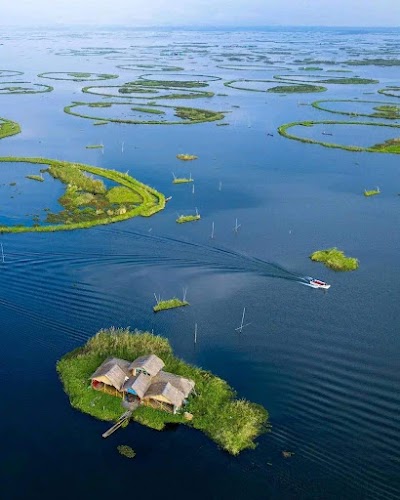
Loktak Lake
Imphal West, India
- Capture the sunrise/sunset over the lake.
- Enjoy a boat ride across Loktak Lake.
- Enjoy local Manipuri cuisine.
- Explore the floating phumdis and villages.
- Interact with local fishermen and villagers.
- Observe the Sangai deer in its natural habitat.
- Visit Keibul Lamjao National Park.
Known for:
Description:
Loktak Lake, the largest freshwater lake in Northeast India, is a mesmerizing spectacle located near Imphal in Manipur. Renowned for its unique floating phumdis (heterogeneous mass of vegetation, soil, and organic matter at various stages of decomposition), the lake is a lifeline for the local communities, providing sustenance and livelihood through fishing and agriculture. The lake is also home to the Keibul Lamjao National Park, the world's only floating national park, which is the last natural refuge of the endangered Sangai deer (Manipur brow-antlered deer). Visitors can enjoy boat rides across the lake, explore the phumdis, witness the traditional fishing methods, and immerse themselves in the serene beauty of this natural wonder. The lake offers breathtaking panoramic views, especially during sunrise and sunset, making it a photographer's paradise and a must-visit destination in Manipur.
History:
Loktak Lake's history is intertwined with the culture and livelihood of the Manipuri people. For centuries, it has been a vital source of sustenance, providing fish, water for irrigation, and a means of transportation. The unique 'phumdis' have naturally evolved over time, creating a floating ecosystem that supports a diverse range of flora and fauna. In the 20th century, the construction of the Ithai Barrage on the Manipur River, intended to provide irrigation and hydropower, significantly altered the lake's ecosystem. This led to concerns about the degradation of the phumdis and the impact on the local communities dependent on the lake. Conservation efforts are ongoing to restore the lake's ecological balance and ensure its sustainable use for future generations, preserving its rich cultural and natural heritage.